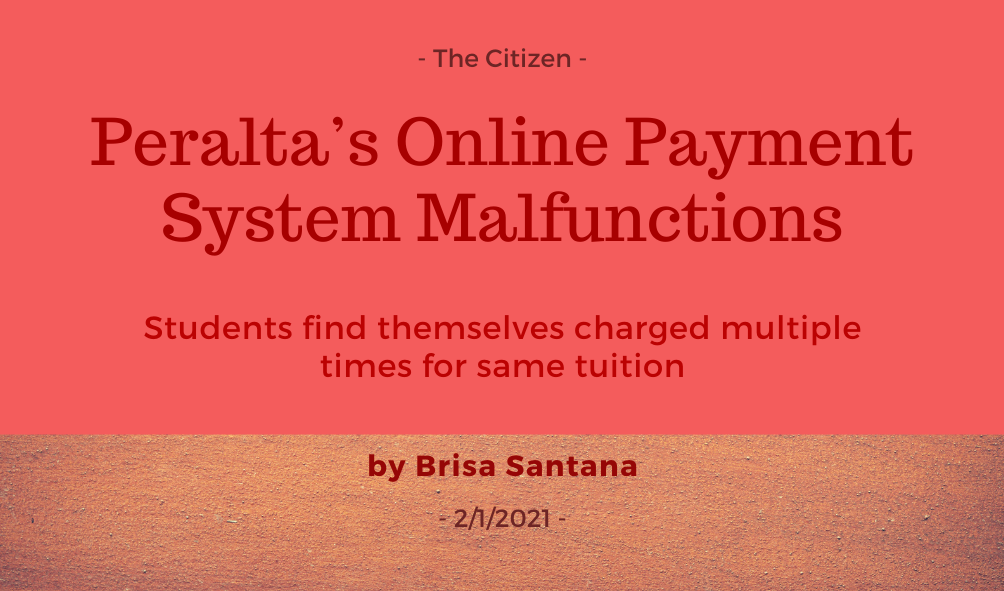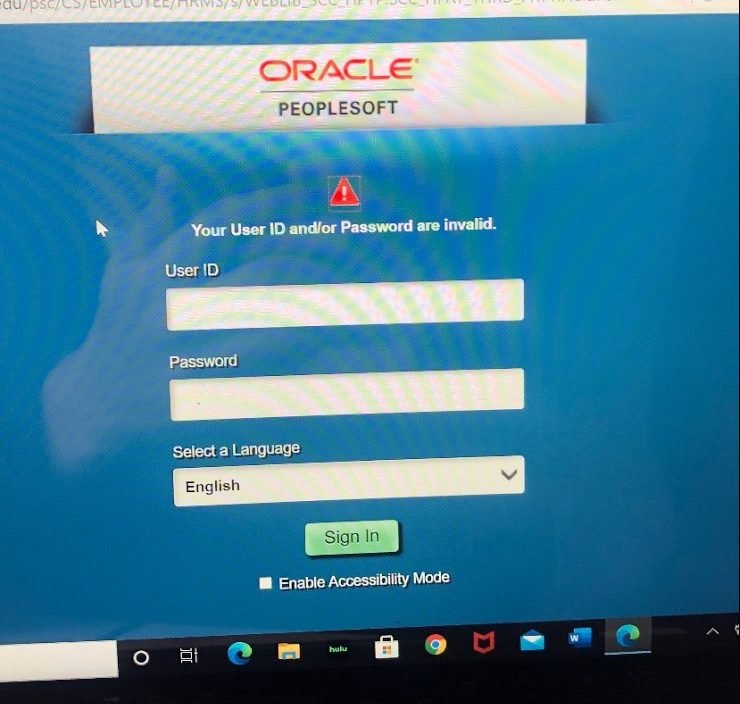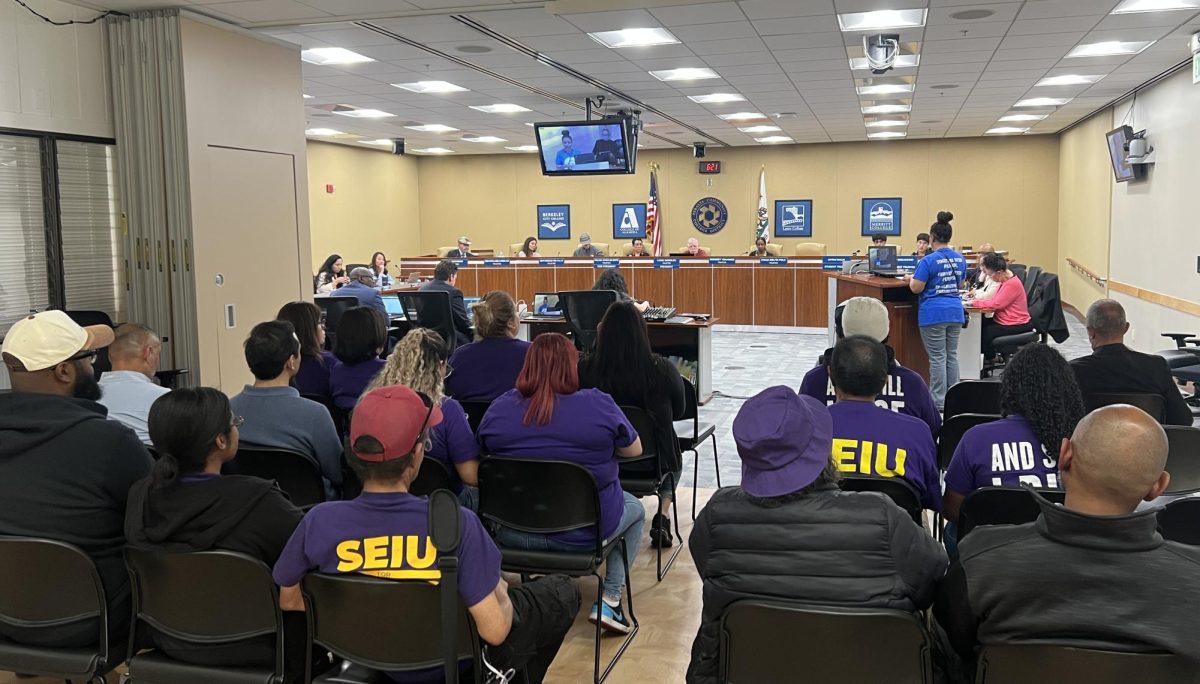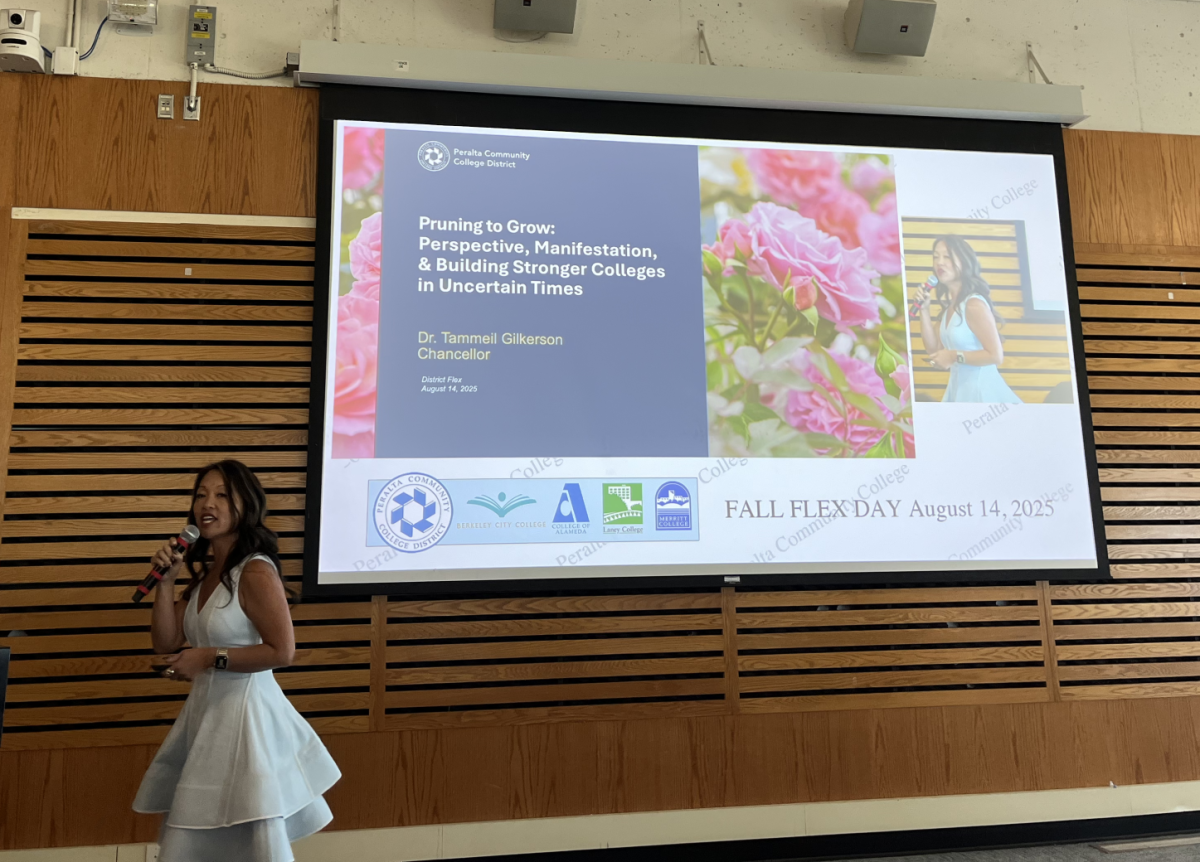
As Peralta Community College District students began the spring 2021 semester last week, they have been confronted with an alarming glitch in the online payment system for class and school charges.
According to Mark Johnson, Peralta’s director of public information, communication, and media, a problem with the Peralta’s transaction vendor ACI Payments (formerly known as Official Payments) has been confirmed by his colleagues at the district.
In a quest for more clarity, The Citizen also emailed district systems analyst Silvia Cortez, college information technology contacts found on a district website and the district’s director of network services, Antione Mehoulley, for comment about this story. Mehoulley deferred to Johnson for comment.
“There is a software interface malfunction that the district office is trying to resolve with the party that handles our online credit card payments,” a Peralta business services bursar said on a Zoom call Friday morning. They have asked to remain anonymous.
According to the bursar, thousands of emails have been sent to Admissions and Records email inboxes from students concerned over the massive overcharge and withdrawals reflected in their bank accounts.
“Once we caught onto the fact that the issue was much larger than a browser issue, our IT department got on it. They have apparently identified what the issue is, it’s just going to take some time for them to resolve it.”
The system error seems to occur when students input their payment information online and are redirected to an unknown page with no compatible sign-in access, leaving portal users confused and with the assumption that doing the process over again will yield different results.

Students interviewed said they realized, when they checked their bank accounts, that each time this process was repeated, a separate charge was sent. This left some with an overdraft of up to six times or more of the originally intended payment amount.
“We have had students make multiple attempts — there was one student who even got charged six times to make a payment of $100 dollars. That’s $600 dollars, and no one has 600 dollars to be tied up, just sitting out there waiting to be reimbursed,” the bursar said.
The Citizen’s photo editor, Ivan Chairez of Laney College, shared that he had the same experience when paying for classes during the fall 2020 semester. He noted that after seeing the extra charges, he quickly took action and called his bank, only to be told that the money couldn’t be refunded yet due to the transaction’s “pending” status. His bank advised him that he could file a claim when the charge officially went through.
This state of uncertainty prompted Chairez to contact student financial systems analyst at Peralta, Joyce Brown-Willis, whose best advice was to get in contact with the student’s personal banking system or with ACI Payments directly if the charges were not dropped eventually.
The Citizen reached out to Brown-Willis for comment, but a response was not received by publication time.
“Joyce has been inundated and is doing a fantastic job, and she’s been getting back to the students in a timely manner. She’s working remotely, as we all are, to try to mitigate these situations. She has been answering emails pretty much around the clock,” the bursar stated.
The bursar highly recommends that students do not pay online, and either pay by mail-in check, or wait until the new payment system is up and running, which district officials announced would be on February 15. For now, students are not being put on hold or prevented from enrolling in classes so as to prevent students from suffering any further penalties.
“Truth be told, one of [Peralta’s] biggest Achilles’ heel is the technology.” the bursar said, adding that they understand the frustration students feel in having their money sitting in limbo.
Johnson reiterated that the situation is being closely monitored leading up to the launch of the PeopleSoft system upgrade.
The upgrade, which was approved by the Board of Trustees during a special meeting on May 29, was originally slated to cost the district $6.34 million. Since November, the revised cost for the upgrade — that includes licensing fees — will be between $9.4 to $9.9 million.


























